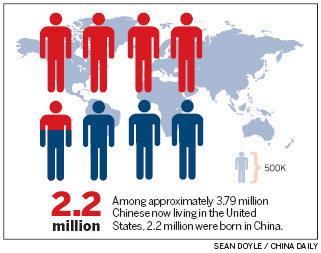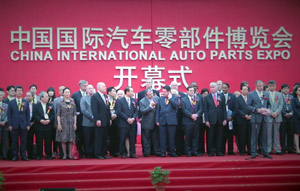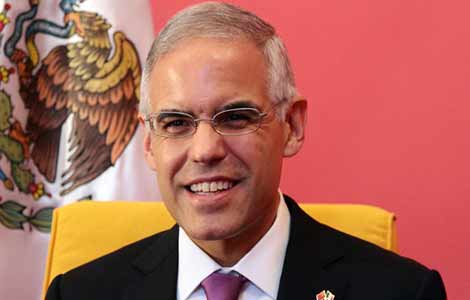Chinese immigration to US still rising
Updated: 2013-09-17 11:10
By Kelly Chung Dawson in New York (China Daily)
|
||||||||
The number of foreign-born Chinese Americans in the US doubled between 2000 and 2010, according to a UN report, and experts attribute the increase in large part to China's growing middle class, who have left in droves to pursue education or business opportunities abroad.
Among approximately 3.79 million Chinese now living in the United States, 2.2 million were born in China, according to the report by the UN Department of Economic and Social Affairs (UN-DESA).

"There has been an astronomical increase in Chinese students coming to US, driven by economic growth in China, improved educational infrastructure and a continued uncertainty about China's trajectory," said Madeleine Sumption, a senior policy analyst and assistant director for research in the international program at the Migration Policy Institute in Washington. "Having an education outside China is viewed as being an insurance policy, and more and more parents are able to afford to take advantage of that."
In 2000, 22,000 visas were issued to Chinese nationals in the US; in 2012, that number jumped to 189,000. Increased government investment in China's education system has also contributed to a larger portion of the Chinese population being able to apply for study abroad, she said.
Zai Liang, a professor in the sociology department at the University of Albany with a focus on immigration and Chinese demography, said he believes that the UN figures are slightly misleading. A significant portion of the 2.2 million Chinese-born immigrants currently in the US are in the country on temporary visas for school or short-term business and will not stay, he said. Some of the students may have been counted twice as a result of exiting the country for holiday trips or other short vacations, he said.
Other factors possibly contributing to increased immigration from China include lenient US immigration policies that encourage high-skill workers from China to take jobs in the US, said Karthick Ramakrishnan, associate professor of political science at the University of California, Riverside. Ramakrishna directs the National Asian-American Survey, and is working on a book on immigration legislation.
The US is working to make its policies more competitive in drawing higher-educated immigrants equipped to work in high-skill industries, he said.
Although immigration from China has increased steadily over the last decade, various push and pull factors play a role in how it plays out in developing countries. Increased wealth provides the means for people to leave, but increased opportunity can also attract many to return home upon graduation, Sumption said.
Immigration reform in the US will likely continue to prioritize visas for educated, high-skill workers from China, but will make it more difficult for Chinese families to bring extended family members with them when they relocate. Adult siblings will no longer be eligible.
The UN-DESA report, which was released ahead of a summit on migration and development held by the General Assembly in early October, noted that 232 million people now live abroad worldwide. In 2000, that number was 175 million. The US remains the world's most preferred destination for immigration: between 1990 and 2013, nearly 23 million immigrants arrived in the country.
"Even though many people think of immigration as being most important to the Latino community, it's also incredibly important to the Asian community as the US' fastest-growing racial group," Ramakrishnan said.
kdawson@chinadailyusa.com
(China Daily USA 09/17/2013 page2)
- More Americans favor immigration than in years past: Gallup
- George W.Bush pushes for immigration reform
- Obama pushes U.S. House Republicans on immigration
- US immigration bill will help attract expertise
- US Senate approves immigration reform
- Slight rise in Chinese immigrants to developed economies
- Nearly all Chinese immigrants in NY have a bank account
- US immigration reform a challenge for China

 Shipwrecked Concordia lift upright
Shipwrecked Concordia lift upright
 All's fare as apps take road to upgrades
All's fare as apps take road to upgrades
 New-energy vehicle policy shifts gears
New-energy vehicle policy shifts gears
 Thirteen dead in US Navy Yard shooting
Thirteen dead in US Navy Yard shooting
 'Amazing Shanghai' on display in Big Apple
'Amazing Shanghai' on display in Big Apple
 Exporters to face more trade friction
Exporters to face more trade friction
 Watchdog bites with no favor
Watchdog bites with no favor
 Shipwrecked Concordia declared vertical off Italy
Shipwrecked Concordia declared vertical off Italy
Most Viewed
Editor's Picks

|

|

|

|

|

|
Today's Top News
Beijing buys more US Treasury securities
Trending news across China on Sept 18
China supports US-Russia deal on Syria
EU ready for talks with China on investment pact
All's fare as apps take roads to upgrades
Fine-particle pollution climbs in August: report
Number of China's female billionaires on the rise
Gun control debate gathers little steam
US Weekly

|

|






